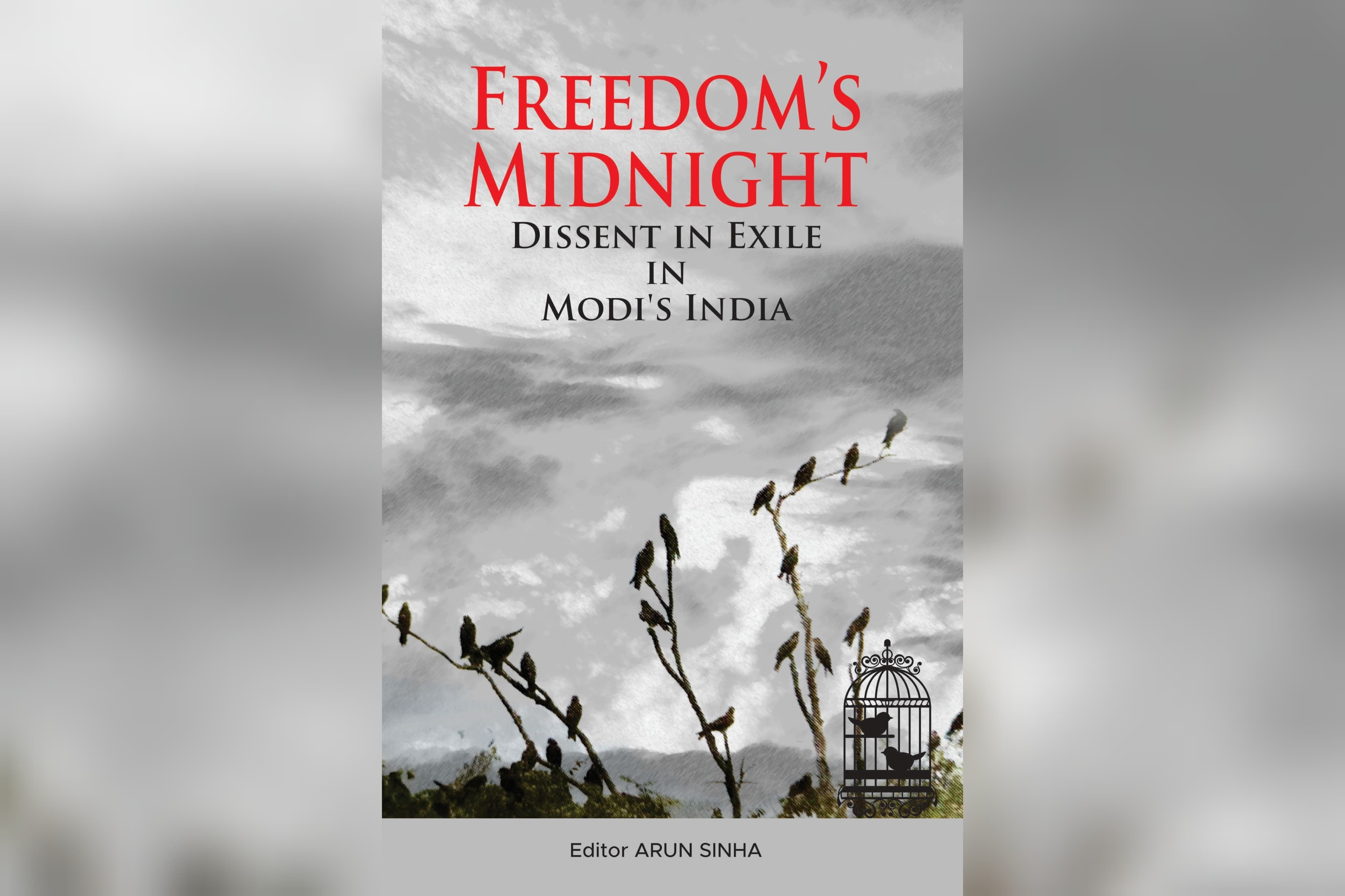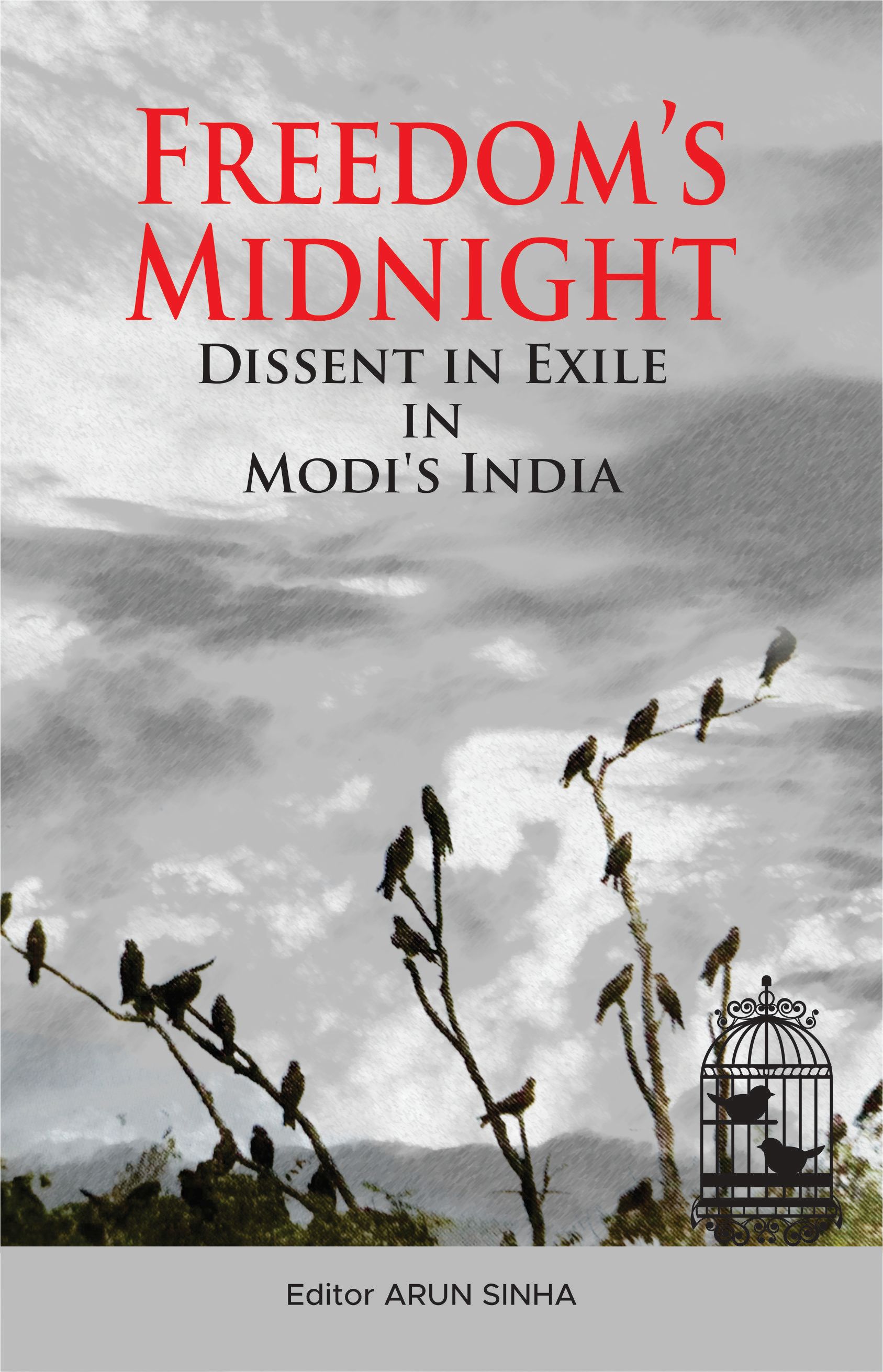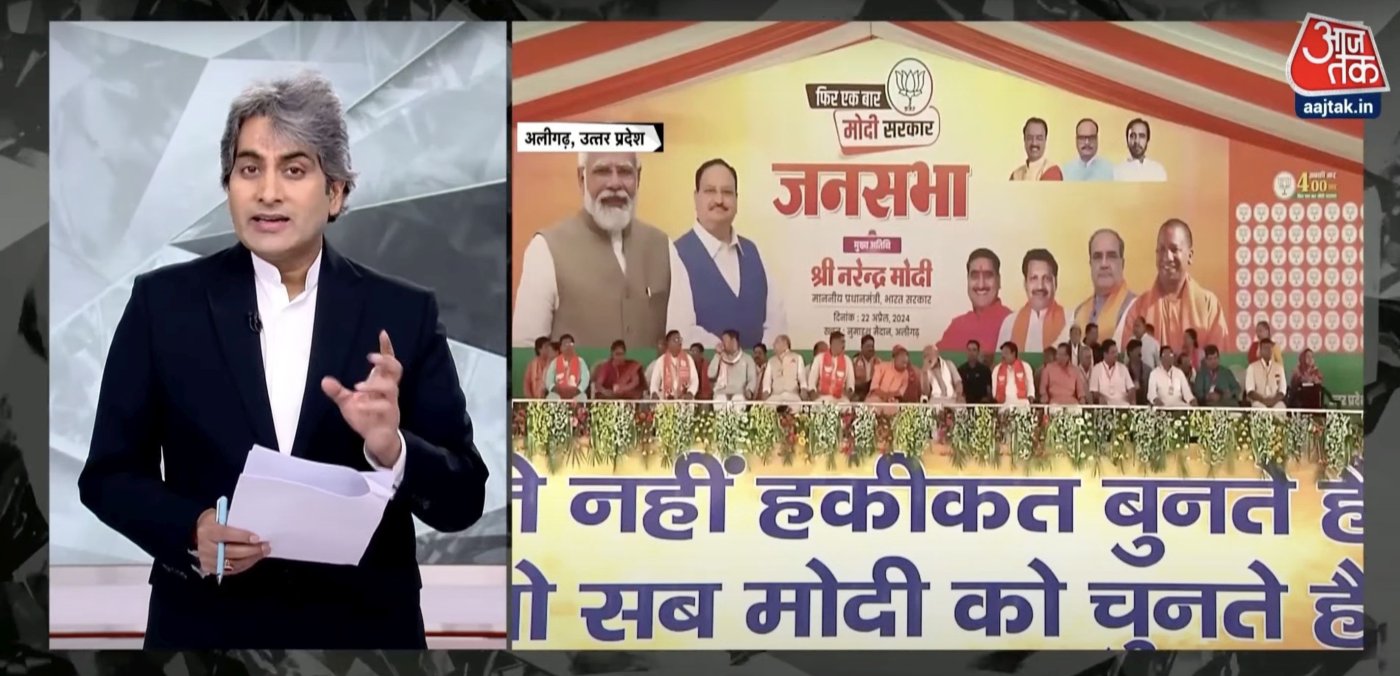The thumping victory in 2014 of the BJP led by Narendra Modi brought a radical change in the ways politics and the media worked in the country. The Indian media was already undergoing many changes: digitization and expansion of online portals and services, sudden jump in the number of both big and small popular news sites and distribution of ad revenues between print and visual media. Modi coming to power accelerated the pace of these changes as well as introduced some drastic changes. These changes covered not only the major media entities but also the state institutions that oversaw and monitored media activities from newsgathering to dissemination. Laws governing media workers and organisations, in particular those connected with the digital media, have since been defined and redefined multiple times.
Before 2014, most major political rivals of the BJP had chosen to believe in the traditional concept of India’s English media as being ‘national.’ The vernacular media was considered ‘regional’ and limited to the areas the languages were spoken in. One of the major reasons for the BJP’s astounding electoral success in 2014 was its powerful media machines and the near- flawless oratorical skills in Hindi of Modi. Together the party and leadership had spotted the importance of India’s language media, in particular the Hindi media early on, and capitalized on it. Hindi, the language spoken in the demographically huge eleven states north of the Vindhyas, became a priceless tool in their hands, for winning friends and influencing people all over the vast Hindi belt, stretching to Maharashtra and Gujarat.
Actually, by the beginning of the millennia, the BJP, then led by Atal Behari Vajpayee, had become aware how several media houses in the Hindi belt were being corporatized. The Hindi belt was the largest homogenized market for the media in India. Although the media corporations remained family-owned, they had begun networking with other successful business houses. With this they had acquired considerable political clout in both print and TV. When one after another their owners were nominated to the Rajya Sabha, it raised no eyebrows. The beneficiaries could be, and indeed were, easily and systematically lured or coerced by governments using their vast resources to allocate advertisements. No wonder, the BJP did not find it difficult to get those media houses to support Modi’s candidature for prime ministership.
It was during 2014-19 that Reliance Jio launched a nearly free introductory period for 4G phones. Inexpensive smartphones and very low initial tariff rates became available to Indians. Other rival service providers quickly followed, with the result that there was a 65% growth in multiple media with 500 million users. Facebook with 294 million Indian accounts already in existence acquired the popular messaging service WhatsApp. This added 200 million more users in India. Internet penetration has been growing astronomically both in urban and rural India. Digital media is growing. All major newspapers have e-papers and digital news platforms to support their shrinking customer base. Helped by these developments and the lessons learnt from Covid times, the government has been crafting a whole new template for using the media, curbing the naysayers’ lobby and controlling interaction between the media and the government closely.
Perhaps taking a cue from Putin or Trump, Modi and BJP leaders started lambasting the media and journalists who were critical of them. The English media was portrayed as wimpy, liberal and practising armchair journalism. Feisty journalists in Hindi media were slowly dislodged from prime-time television and newsrooms of legacy media. Journalists were showered with pejoratives such as Sickular, Liberandu and Presstitutes. Ministers of the Modi government used messaging services like X (formerly Twitter) in both English and Hindi to hit out at the liberal and independent-minded journalists. They monitor social media closely and swiftly get accounts posting critical comments blocked. It did not stop at the demonisation of liberal citizens, writers and media persons. There was an increasing trend of removal of liberal editors from television and print media.
This was accompanied by the promotion of journalists known to be sympathetic, if not downright devotees of the rightwing government. Many such journalists are seen repeatedly as regular participants in TV panels in prime-time news hours where government policies and elections are being discussed. They rubbish any criticism of the regime with histrionics and cacophonous interjections. That the linkages between the regime and the pro-government journalists are strong and abiding was visible in a spate of obituaries for a powerful ex-minister known for his media savviness. At least two senior TV journalists frankly confessed that they had been in daily touch with the late minister and took their orders directly from him every morning as they prepared their daily news flow charts.
Such proximity to those that the media is supposed to keep a critical eye on, and undeniably copious amounts of advertising money made available to chosen houses through the government’s department for publicity, the DAVP, may not have pleased the earlier breed of editors and owners at all!


Repeatedly tarred and feathered, the mainstream media in Hindi was the first to buckle and capitulate to the new order. According to the figures available from the Registrar of Newspapers, of the ten largest selling Indian dailies, Hindi newspapers occupy the top six slots. And despite recession, during 2014-22 their pan-India ad revenue rose from Rs 50.7 billion to a whopping Rs 62 billion. Most editors of Hindi papers are pleased with this jump in earnings, but they also seem to have given up their predecessors’ penchant for fiercely protecting and supporting their editorial freedom. News bureaus have also shrunk and are increasingly manned by people handpicked for their proximity to the regime, not for their news gathering skills. A quick scan of major Hindi dailies in the morning will show that this is resulting in most major Hindi newspapers picking up only positive, PMO-related news, sourced from deftly handed handouts from ministries, various news agencies and digital news sites known to be supportive of the regime and last but not the least, from the weekly programme Mann ki Baat, broadcast by Prime Minister Modi over All India Radio.
Since 2014, with no explanation or formal announcement, press interactions with the Prime Minister, which enabled a direct interaction with the nation’s chief executive in the past, have been stopped. Along with this, ministers’ and top bureaucrats’ day-to-day engagement with the media have also been drastically pruned and new protocols for such meetings have been put in place in the last ten years.
Under these circumstances, Mann ki Baat makes for an interesting study. On this programme, PM Modi talks mostly on non-political subjects: building toilets, getting daughters to school, helping women with house chores and the need to conserve wildlife and the planet. A sample survey by the Indian Institute of Management, Rohtak in 2023 claimed that Mann ki Baat had 230 million regular listeners. In August 2019, Modi had 49.5 million followers on X. By July 2023, this number had grown to 90 million, putting him among the top ten most followed person on X. That gives Modi a formidable public space for projecting a sociable and benign image of himself, ‘above party politics and devoted to national interest and public service.’
***
With more and more media owners, editors and reporters turning compliant of changes enforced by the regime, the Hindi news media, both print and television, has become totally non-combative, if not unashamedly supportive. This is visible when the media outlets are dealing with debatable issues, riots and disturbances or the incapabilities of the new, centralized model of governance forced upon the democratic and federal institutions. In most of the major media corporations, boardrooms have appointed members who represent venture capitalist companies, banks and owners of businesses ranging from textiles to pharmaceuticals. The board, as the protector of shareholders’ interests, cares more for the bottomline in the balance sheets than the headline in the broadsheets. Our media laws regarding banning multimedia ownership and responsibility have remained fragmented and largely incoherent. So, when the major media houses led by professional managers dictate the newspaper policy, the editors must follow meekly.
The international media watchdog, Reporters Sans Borders has been issuing lists that show India close to the bottom on the international scale for journalistic freedom and safety. The largest number of journalists killed or jailed in the line of duty has been from the vernacular media, Hindi in particular. Protests are louder in case of English media journalists who are better networked with media bodies like the Editors’ Guild or various Press Clubs. However, raising voices against the clampdown on the media has been quickly muffled and then abandoned, because the major media bodies no longer seem to care for journalists’ rights.
The Press Council of India, a quasi-judicial, statutory autonomous body created to protect free and independent journalism, chose to oppose the Kashmir Times editor Anuradha Bhasin’s petition against Internet shutdown and prohibitory orders in Jammu and Kashmir and even issued a statement supporting the government’s stand of totally restricting the media in the state ‘in the interest of the integrity and sovereignty of the nation.’
In 2018 the Election Commission of India (ECI) set up a special committee to identify gaps in the regulations regarding election campaigning and suggest measures to plug them. The report was submitted to the ECI in January 2019, prior to announcement of the Voluntary Code of Ethics for the Lok Sabha elections in March. But the contents of the report were not known until after the election results had been announced. So, in the absence of a clear legal framework during the elections, it was taken that the digital media platforms were not covered by Section 126 of the Representation of the People Act. This meant the digital platforms could go on streaming news after they had informed the users that they were not to upload illegal and harmful content, and took some reportedly offensive content down within 36 hours. In April 2019 a number of civil society organisations issued a statement and appealed to political parties to monitor compliance of money spent by political candidates on media campaigning through IT cells specially set up by some political parties. But since there was no clear regulatory framework, a timely regulation of online content remained impossible.
The government of India’s sudden stay-at-home directive to fight the pandemic towards the end of March 2020, which extended up to 2021, triggered a two-month nationwide lockdown. While the media and their readers complained about being denied their favourite papers at their doorstep, a surprising spinoff was that the internet suddenly rose to be India’s main platform for disseminating news and views. And the print media shrank. Indians discovered that they could access news digitally in all Indian languages through the Net in their homes. And it was almost free. The digital format also presented their schooling-deprived children with a new tool for learning. So, both the public and the publicity-starved politicians delved deep into multi- language alternatives available on the Net.
As consumers of news, readers of vernacular newspapers have largely been freebee junkies to whom brand names or the media’s moral obligations towards its readers matter little. Data from Nielson and the Broadcast Audience Research Council (BARC) on the proportions of men and women above 12 years accessing the Net in April 2020 revealed that every other city dweller was using the Net. Their usage was up 54% across cities. In the rural areas, thanks largely to smartphones, net penetration was registered at 32%. The national average was 40%, and the average viewing time was at least four hours per day. And tellingly, the all-India number for women accessing the Net stood at 35%, compared to 65% men. Of these, 18% used the Net for chatting, 15% for social networking, 15% for video streaming and 11% for gaming.
Soon we saw politicians invent terms like, ‘Covid Warriors,’ supported by popular film stars and cricketers to fight the virus as ‘proud’ Indians. The subtle message it sent was, ‘Life matters more. Civil liberties and labour laws must, if need be, sacrificed to save lives: Jaan hai tau jahaan hai!’ As the world reeled under the pandemic, ethical questions pertaining to our media about ensuring similar ease of broadband accessibility to the poor were relegated to the background.
The government of India’s Bureau of Outreach and Communication (BOC) in the Ministry of Information and Broadcasting is becoming an increasingly important nodal body for India’s media today. On behalf of all client ministries, it functions as the sole outreach for various sorts of paid outreach campaigns covering the print, electronic, outdoor, social media and websites. A new print media advertising policy became effective from 1 August 2020. According to it, all ministries in the first quarter of the financial year were to pass on 80% of their funds earmarked for advertising various programmes and policies in advance to the BOC. This was to also cover the departments and organisations under them. The BOC was to handle over three quarters of all payouts for advertising to the media organisations.
This policy was bound to have major repercussions on the vernacular media, including Hindi. It ensures that 80% of the advertising space the ministries buy in the print media must belong to the vernacular dailies. The new policy revised guidelines providing for easier empanelment norms under which some tribal and under-represented languages such as Bodo, Dogri, Garhwali, Maithili and Konkani will also be able to claim their share. You do not need to be a rocket scientist to see the bounty it offers to the print media in a generally ad-starved ecosystem of today. That it will expect the media organisations to be ‘favourably disposed’ towards any requests from governmental quarters is almost a given.
***
An important question the observers of the vernacular media are concerned with is that of inclusivity. How do we bridge the widening digital gap between the Net news consumers in the rural areas, small towns and the cities? How to ensure privacy with apps like Aadhaar becoming mandatory? It is undeniable that to turn away from the digital now means turning away from the age of 24x7 news and vital information.
Digital newsrooms, which are being developed also by Hindi and other vernacular newspapers, need big money for news gathering and even more for constant upgradation of technology to remain more user-friendly than competitors. The question that arises is: What is the ideal model for the digital news world to raise vital revenues? In the West, the New York Times and the Wall Street Journal have created sound models for themselves that carry a healthy mix of subscription-based revenue and advertising that includes direct sale deals, branded content created for niche groups of advertisers and programmatic advertising. Can the model be replicated in India, particularly in the vernacular media? According to Alexa, most Indian viewers prefer to visit established news networks. This leaves very little in the market for independent news media like Scroll and The Wire. A 2018 launch of subscription-based model has seen little progress.
(Mrinal Pande is an eminent writer, journalist and television personality. She is the author of, among others, Daughter’s Daughter, Devi: Tales of the Goddess in Our Time, and The Subject is Woman. She worked as the editor of Hindustan, Vama and Saptahik Hindustan. She is currently group editorial adviser of the National Herald group of newspapers. She was chairperson of Prasar Bharati.)
(Excerpt from Freedom’s Midnight: Dissent in Exile in Modi’s India edited by Arun Sinha, published by Promilla & Company and Bibliophile South Asia, New Delhi.)
Get exclusive access to new databases, expert analyses, weekly newsletters, book excerpts and new ideas on democracy, law and society in India. Subscribe to Article 14.

